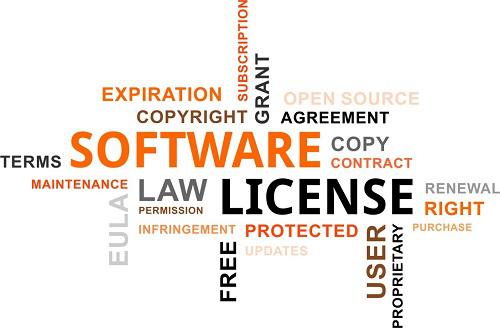Software Licensing Market Overview:
The software licensing market has evolved significantly with the rapid digital transformation across industries. Software licensing governs how software can be used and distributed, ensuring that developers and companies receive fair compensation for their intellectual property. The shift from traditional perpetual licenses to subscription-based and cloud-centric licensing models has revolutionized the industry. the Software Licensing Market size is projected to grow USD 5 Billion by 2030, exhibiting a CAGR of 13% during the forecast period 2024 - 2030. As businesses increasingly adopt SaaS (Software-as-a-Service) platforms, demand for flexible, scalable, and cost-effective licensing structures is rising. Moreover, the growing need for software compliance, cybersecurity, and asset management is propelling the adoption of advanced licensing solutions globally.
Get a sample PDF of the report at –
https://www.marketresearchfuture.com/sample_request/3848
Industry News:
Recent developments in the software licensing market highlight a growing focus on automation and cloud-based solutions. Microsoft, a dominant player, continues to refine its licensing frameworks for Azure and Microsoft 365, offering enhanced compliance features and flexibility for hybrid work environments. In addition, Adobe's Creative Cloud licensing model has gained traction among content creators and enterprises alike, showcasing a successful shift to subscription-based services. Other notable updates include Oracle's licensing reforms to simplify cloud migration and SAP's new pricing structures aimed at enterprise digital transformation. The introduction of AI-powered software asset management tools is also transforming how organizations monitor and optimize their license usage.
Market Segmentation:
The software licensing market is segmented by type, deployment mode, application, and end user.
By Type, the market includes perpetual licensing, subscription-based licensing, and concurrent licensing. Subscription models are experiencing the fastest growth due to lower upfront costs and ease of scalability.
By Deployment Mode, software licenses are offered through on-premises and cloud-based platforms. Cloud-based deployments are dominating due to their flexibility and cost-effectiveness.
By Application, licensing is used across operating systems, productivity tools, security software, and design tools. Each application area requires different licensing models tailored to usage and compliance needs.
By End User, the market serves individual users, SMEs, large enterprises, and government organizations, with large enterprises contributing the most to market revenue due to their extensive IT infrastructure.
Market Key Players:
Key players in the global software licensing market include Microsoft Corporation, IBM Corporation, Oracle Corporation, Adobe Inc., SAP SE, Cisco Systems Inc., and Symantec Corporation. These companies invest heavily in refining their licensing strategies to remain competitive.
Microsoft leads with its flexible and integrated licensing for Azure and Microsoft 365, offering scalability and compliance.
Adobe excels with its cloud-first approach in Creative Cloud, while IBM provides robust licensing solutions embedded in its enterprise software packages.
Oracle and SAP offer tailored licenses for large-scale enterprise resource planning systems.
Meanwhile, emerging vendors like Flexera Software, Snow Software, and Reprise Software are carving out a niche by offering software asset management (SAM) and licensing optimization tools.
Regional Analysis:
The software licensing market is expanding globally, with North America leading due to the presence of major technology companies and early adoption of cloud computing. The United States alone accounts for a significant share, driven by high software usage across business sectors.
Europe follows closely, led by countries like Germany, the UK, and France, where strict regulatory environments demand precise software compliance.
Asia-Pacific is witnessing rapid growth owing to increasing IT investments, especially in China, Japan, India, and South Korea. This region is becoming a hotbed for cloud adoption and digital transformation initiatives.
Latin America and the Middle East & Africa are gradually gaining momentum, driven by economic development and digital infrastructure investments.
Recent Developments:
Recent advancements include the integration of blockchain technology into licensing models, ensuring transparency and traceability of software usage. Companies are increasingly using AI and machine learning for real-time monitoring of license usage, reducing compliance risks and unnecessary costs.
In 2024, Microsoft unveiled a unified licensing portal offering cross-platform license management, simplifying compliance for global businesses.
Flexera launched new automation tools that enhance visibility into SaaS license consumption, which helps reduce overspending.
IBM and SAP also enhanced their hybrid cloud license offerings, providing flexible deployment options to match enterprise modernization needs.
Moreover, strategic acquisitions in the sector—such as Snow Software’s acquisition of Embotics—demonstrate a trend toward integrated solutions that combine software asset management with licensing.
Browse a Full Report –
https://www.marketresearchfuture.com/reports/software-licensing-market-3848
Market Dynamics:
The dynamics of the software licensing market are shaped by factors such as cloud adoption, cybersecurity concerns, regulatory compliance, and cost management. The ongoing digital transformation in both public and private sectors necessitates efficient licensing practices.
Drivers of the market include the widespread shift to subscription and SaaS models, increased reliance on digital tools, and the need to reduce software piracy.
Challenges include complex license agreements, software audits, and maintaining compliance across multiple vendors and geographies.
Opportunities lie in automating licensing workflows, integrating licensing with cybersecurity protocols, and creating user-centric license models.
Additionally, the market is seeing increased demand for License-as-a-Service (LaaS) platforms that offer usage-based pricing, fostering innovation and flexibility.
The software licensing market is undergoing a transformation fueled by cloud computing, digitalization, and evolving enterprise needs. Subscription-based models, automation, and integrated compliance tools are reshaping how software is accessed and managed. As organizations prioritize flexibility and cost-efficiency, the role of licensing in strategic IT planning will only become more central. With robust growth across regions and continuous innovation from key players, the global software licensing market is poised for sustainable expansion in the years ahead.
Top Trending Reports:
Large Language Model (LLM) Market
Contact
Market Research Future (Part of Wantstats Research and Media Private Limited)
99 Hudson Street, 5Th Floor
New York, NY 10013
United States of America
+1 628 258 0071 (US)
+44 2035 002 764 (UK)
Email: sales@marketresearchfuture.com
Website: https://www.marketresearchfuture.com

